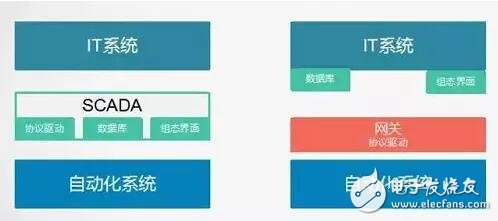Although the sensor is the lowest-level sensing device of the Internet of Things, some people think of data acquisition often think of sensor manufacturers first. However, in fact, from the business side, in the practice of industrial Internet of Things, how to dock the controller is the primary problem. Because there is already a lot of data available in the controller, these data and equipment faults, status, process parameters, energy consumption parameters, etc. are closely related. At the same time, in some application scenarios, commands need to be sent to the controller (issuing recipes, starting and stopping, modifying process parameters, etc.). Therefore, the connection of the controller is the primary consideration in the business side. The sensor is more than the data latitude on the controller side is not enough, or some new applications or devices without controllers (either very old, or mechanical) will become the first consideration.
Then let's talk about the classification of industrial box manufacturers today and my personal views on the trend of gateway products.
As mentioned above, the role of the industrial gateway is to collect data, and because of the needs of the industrial cloud platform, it also undertakes the mission of automation and IT docking. It can be said that it is a product that connects the past and the future.

Traditionally, SCADA software is used in an automated system to collect local devices and store them in a corresponding database. The IT system then uses the database to dock and collect data. The cost of doing so is not only high (especially for equipment-based equipment operation and maintenance), but also low efficiency. Therefore, the industrial gateway (box) has gained more market.

The market for traditional SCADA will gradually slow down. At the database and data display level, IT systems have more powerful configurations (high concurrency, distributed storage, H5 technology, 3D, etc.), and are more flexible at the protocol layer. Industrial gateway replacement.
In general, industrial gateways need to have the following capabilities:
1, with the right (automation system) protocol analysis capabilities (communication protocols: Modbus, PPI, MPI, CNC, etc.; bus protocol: CAN, PROFIBUS, etc.; industrial wireless protocols: WirelessHart, 433, etc.), the current gateway is based on the communication protocol The main, only a small number of manufacturers will consider the next bus protocol and wireless protocol, while the traditional bus protocol conversion is also called industrial gateway, the gateway is unclear.
2. It has the ability to connect to the upper (IT system) protocol and the communication capability (Ethernet, WIFI, 3G, 4G, NB-IOT, etc.).
3. It has the ability to develop secondary and upper private agreements.
4, with the ability to data cache, local calculation (fog calculation / edge calculation).
Wuxi Doton Power , https://www.dotonpower.com